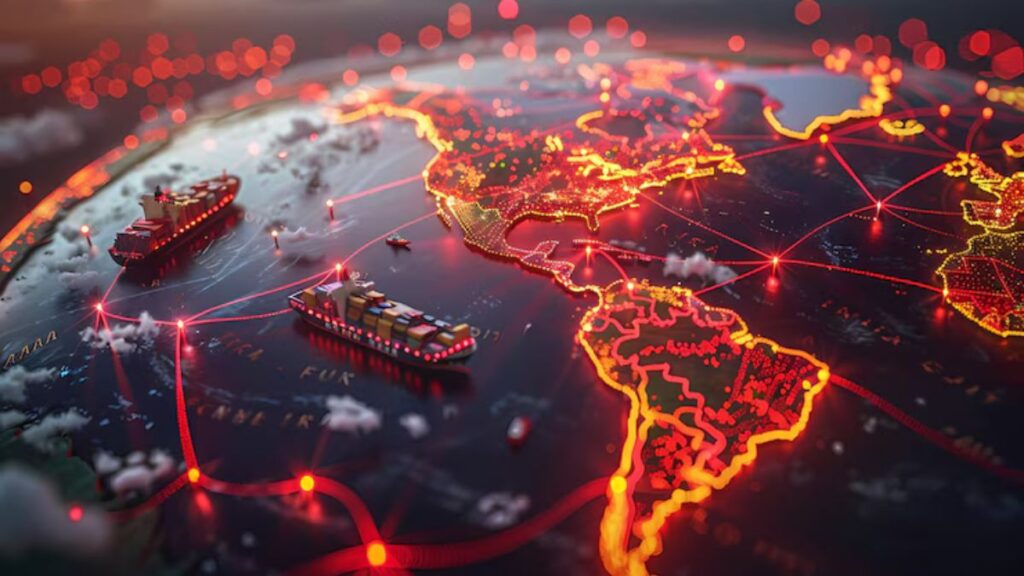Welcome to the age of strategic realignment. As the post-pandemic dust finally settles and the world acclimates to accelerated digitalization, procurement nation.com professionals across the globe are navigating one of the most tectonic shifts in supply chains since the invention of the container ship. What’s emerging in 2025 is not a return to “business as usual” but a fast-evolving matrix of new trade routes, procurement hubs, and sourcing strategies born out of necessity—and turbocharged by opportunity.
Whether you’re a CPO in Berlin or a logistics strategist in Manila, understanding the new global supply shifts is more than a competitive edge—it’s a survival play. Let’s cut through the jargon and dive into the five most seismic shifts shaking the globe, what they mean for your procurement game, and how you can pivot smarter, faster, and bolder than ever before.
1. The Great Regional Rebalance: Nearshoring Rises, Offshoring Recalibrates
Say goodbye to the old binary of offshore vs. domestic. In 2025, the power move is regionalization—building sourcing strategies around geographical clusters that mitigate risk while optimizing agility. The once-unquestioned dominance of China as the “world’s factory” is being decentralized, not dethroned.
Mexico, Poland, Vietnam, and Morocco are stealing the spotlight. Nearshoring isn’t just about geography; it’s about resilience. Mexican manufacturing, bolstered by USMCA and a proximity advantage to North American markets, has become a darling of tech, automotive, and aerospace procurement nation.com. Poland’s sharp rise as a European electronics hub, coupled with EU funding and educated labor, is a quiet but formidable force.
Meanwhile, Vietnam and Indonesia are no longer “emerging” players—they’re arrived. As China moves upstream into higher-value manufacturing and faces mounting labor cost pressures, Southeast Asia is absorbing a wave of investments in textiles, electronics, and even semiconductors.
Takeaway: The smart money isn’t just moving—it’s diversifying. Procurement leaders are no longer betting on a single location but are engineering multi-node supply ecosystems that flex with global volatility.
2. China 2.0: From Factory Floor to Strategic Partner
Don’t mistake decentralization for disengagement. China isn’t being replaced—it’s being redefined. In 2025, it has evolved into a strategic supplier-partner and innovation collaborator, especially in sectors like electric vehicles (EVs), batteries, and renewable energy components.
Tech giants are pivoting their China strategy from cost-based sourcing to R&D-based partnerships. This reflects a growing maturity in China’s value proposition: it’s not just where things are made, but where innovation and integration happen at scale.
At the same time, Beijing’s “dual circulation” policy is nudging domestic players to focus on internal consumption and higher-margin global exports. The result? Procurement from China is becoming more complex, strategic, and reliant on relationship management and IP protection protocols than ever before.
Takeaway: Treat China like a monolith at your peril. Smart procurement teams now manage China as one node in a larger ecosystem, balancing its strengths while proactively hedging dependencies.
3. The Green Gold Rush: Supply Chains Go Circular
Sustainability is no longer a press release buzzword—it’s a core procurement metric. And not just because it feels good. The global transition to a circular economy is unlocking massive value through waste reduction, lifecycle tracking, and material innovation.
In Europe, the Corporate Sustainability Reporting Directive (CSRD) is forcing procurement officers to get granular about supplier emissions, material provenance, and labor conditions. This regulatory domino is falling fast across the globe—from Japan’s Green Transformation (GX) initiative to California’s SB 253 and 261, procurement is now the gatekeeper of ESG compliance.
Enter supply chain circularity. Leaders are integrating recycled materials, partnering with reverse logistics firms, and embedding traceability tech from the get-go. Metals, textiles, plastics, even batteries—there’s a global scramble to close the loop and capture green value.
Case in point: Sweden’s Northvolt isn’t just making EV batteries—it’s pioneering a fully recyclable cell architecture. Their suppliers aren’t just chosen for price—they’re chosen for post-use strategies.
Takeaway: The new procurement power play? Mastering end-to-end sustainability and using it as both a risk reducer and brand amplifier. Being green is no longer a differentiator—it’s the ticket to the table.
4. Digital Procurement 2.0: The AI & Automation Leap
If 2023 was the year of digital pilot projects, 2025 is the year of procurement intelligence at scale. Powered by AI, blockchain, and real-time analytics, the best supply chains are no longer just responsive—they’re predictive.
Procurement tech is graduating from dashboards to decision engines. Modern platforms ingest global data—from commodity prices to weather disruptions—and output supplier risks, contract renegotiation windows, and optimal buying cycles.
Think of it as augmented procurement intelligence. AI tools like Keelvar, Arkestro, and LevaData are using predictive analytics and game theory to automate sourcing events, while dynamic pricing tools are bringing real-time supplier benchmarking to the forefront.
In 2025, the standout CPOs aren’t just tech-savvy—they’re data-literate strategists, building their own tech stacks and training procurement teams in data storytelling.
Takeaway: Automation won’t replace procurement jobs. But professionals who don’t learn to collaborate with AI? They’ll get leapfrogged by those who do.
5. Supply Sovereignty: Geopolitics Gets Personal
You can’t talk about global sourcing in 2025 without addressing the elephant in every boardroom: geopolitical risk. From rare earths to semiconductors, governments are no longer just regulators—they’re market actors, shaping procurement choices with subsidies, sanctions, and strategic stockpiles.
The US is doubling down on semiconductor reshoring through the CHIPS Act, while the EU’s Net-Zero Industry Act is fueling procurement realignment in cleantech manufacturing. Meanwhile, India’s Production Linked Incentive (PLI) schemes are turning it into the dark horse of mobile, electronics, and pharma production.
But here’s the twist: it’s not just about power players. Smaller nations are leveraging geopolitical pressure to offer “supply neutrality”—acting as trusted nodes in trade, especially for companies tired of tariff wars.
Example: Singapore is positioning itself as the Switzerland of supply chain logistics—a hyper-efficient, geopolitically neutral trade haven with top-tier infrastructure and zero drama.
Takeaway: CPOs must now wear geopolitical risk lenses as standard issue. If you’re not war-gaming supply disruptions based on tomorrow’s elections, you’re already behind.
Bonus Trend: Talent-as-a-Service in Procurement Nation.com
Let’s not forget the people side. With all this flux, companies are reshaping not just what they source—but who does the sourcing. Welcome to the rise of procurement gig talent and global sourcing consultants as-a-service.
Platforms like Prokuria and Consus Global are matching specialized procurement nation.com experts to companies on-demand. Need someone to run a multi-country RFP on renewable materials? There’s a freelancer for that. This trend is especially hot in startups and mid-size firms that need expertise, not headcount.
Takeaway: The procurement org chart is going fluid. Adaptable companies will stop thinking in FTEs and start thinking in capability clouds.
Conclusion: From Tactical to Transformational
In the shifting sands of 2025, procurement nation.com is no longer about just cutting costs or ticking compliance boxes. It’s about mastering global agility. It’s about knowing when to build redundancy and when to double down. It’s about tracking carbon and currency, scanning satellite data and supplier sentiments.
The future of procurement belongs to the bold. The leaders who are willing to abandon the status quo, experiment with regional hedging, pilot AI tools, and embed sustainability as core strategy—not window dressing.
Procurement Nation.com will be tracking these shifts with deeper dives, real-world case studies, and data-backed playbooks. Stay tuned, stay sharp, and as always—source like the future depends on it.
Because, spoiler alert: it does.






